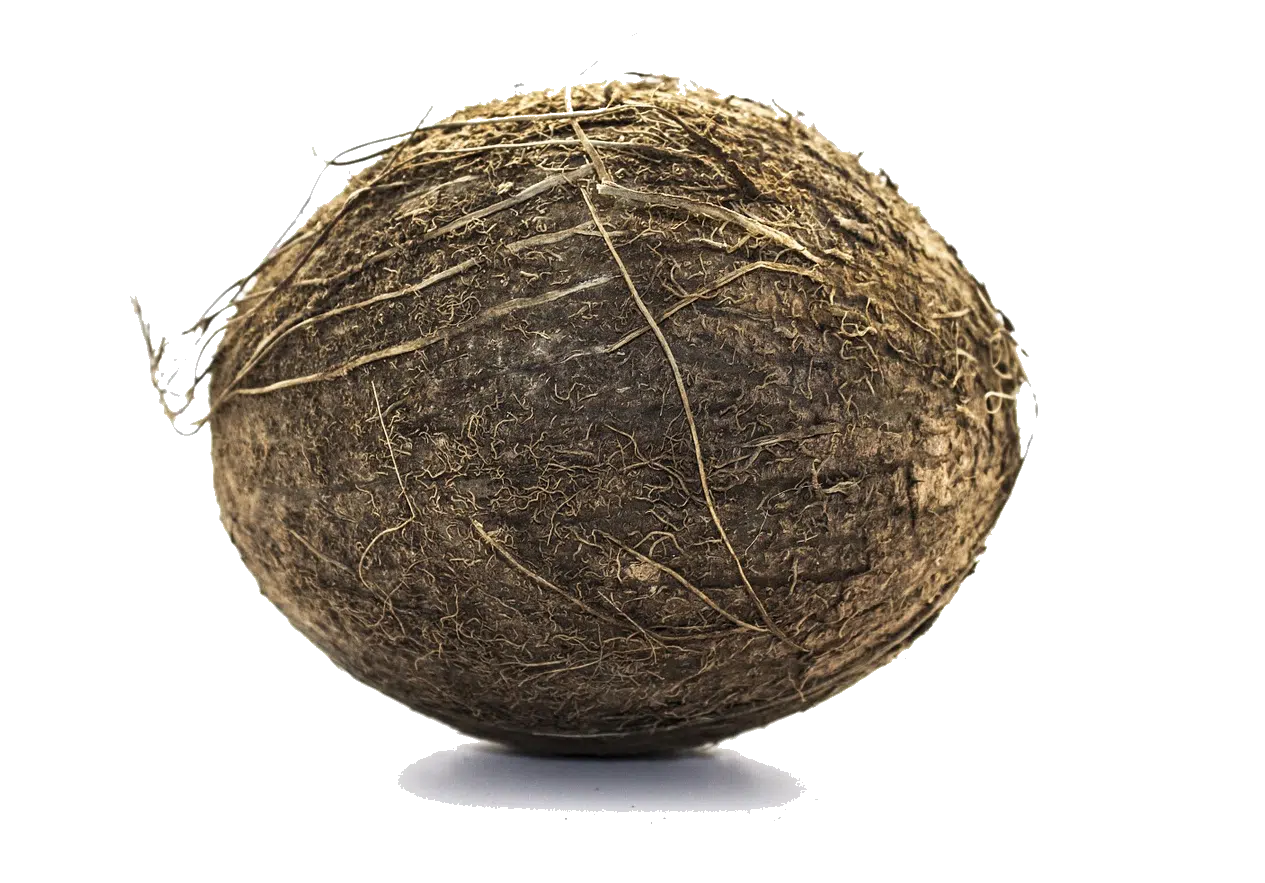It was only meant to be a one-afternoon experiment...
Five years later, it’s become a movement.
Up until a couple of years ago, skincare took up a fleeting amount of my time and focus. I never expected it could become something so central to my life, and I certainly never thought that process would start by reading a magazine article.
And yet, that’s what happened…
A couple of years ago, I was leafing through the Weston Price Foundation magazine and stumbled on an article about traditional tallow-based skincare in Mexico.
Not being particularly interested in skincare — but being wildly interested in traditional cultures and the wisdom we can learn from them — I stuck around long enough to get absolutely hooked by the history of how we as humans have cared for our skin and just how much of a connection with the world around us that process used to give us.
The benefits of using tallow on your skin went on for pages. I had tallow as skincare on my radar in a vague, “Oh yeah, I think I’ve heard about that” type of way, but I was blown away by how something so simple, so natural, could apparently outdo all the other skincare on the modern market.
So when I saw the recipe for making your own tallow moisturizer at the end of the article, almost as an afterthought, I thought to myself, “I’ve got to try this.”
And that’s how I ended up standing in my kitchen staring down a 100 pound pile of beef fat.
(I know. Ew…right?!)
What I thought would be a one-afternoon project turned into a deep dive into the truth about what our skin really needs and how so much of what we put on our skin today is actually really harmful. Best of all, I found out how something as seemingly simple as traditional skincare can help us return to the path our ancestors walked, and reconnect us with the world around us.
(And my skin started looking pretty damn amazing too.)
To understand the story, you have to start here…
The Truth About Skincare
Everyone knows the basics of skincare, right? Your skin gets dirty, greasy, and clogged up with dead skin cells and nasty bacteria, so you wash, exfoliate, tone, and moisturize, then do it all over again.
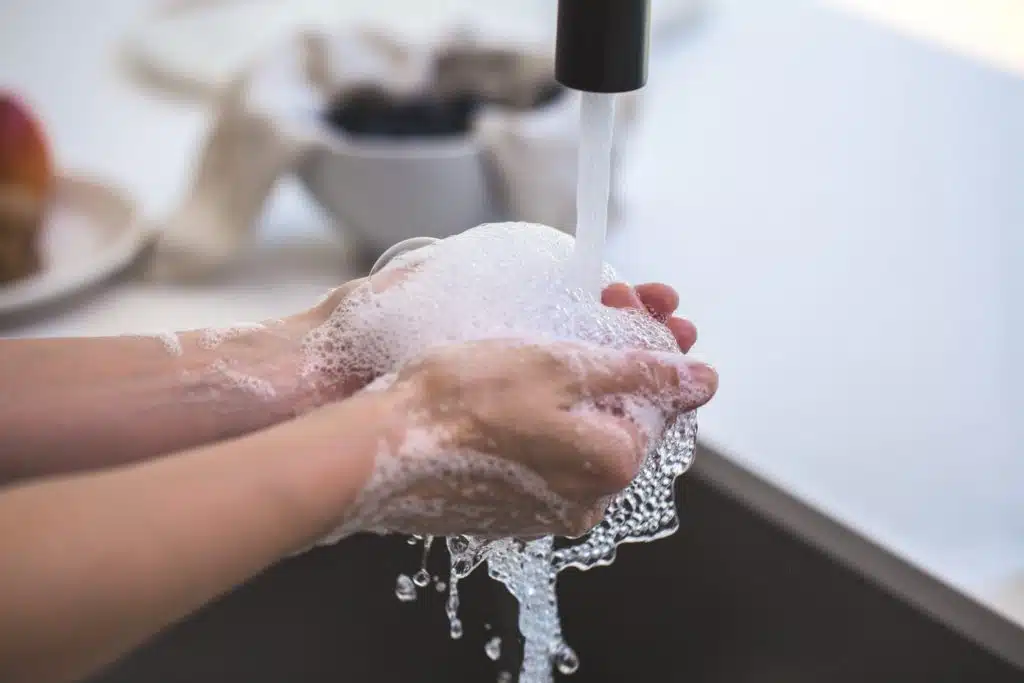
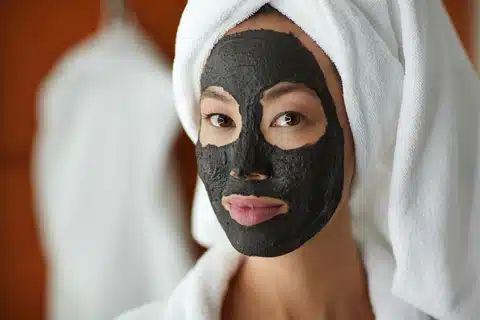

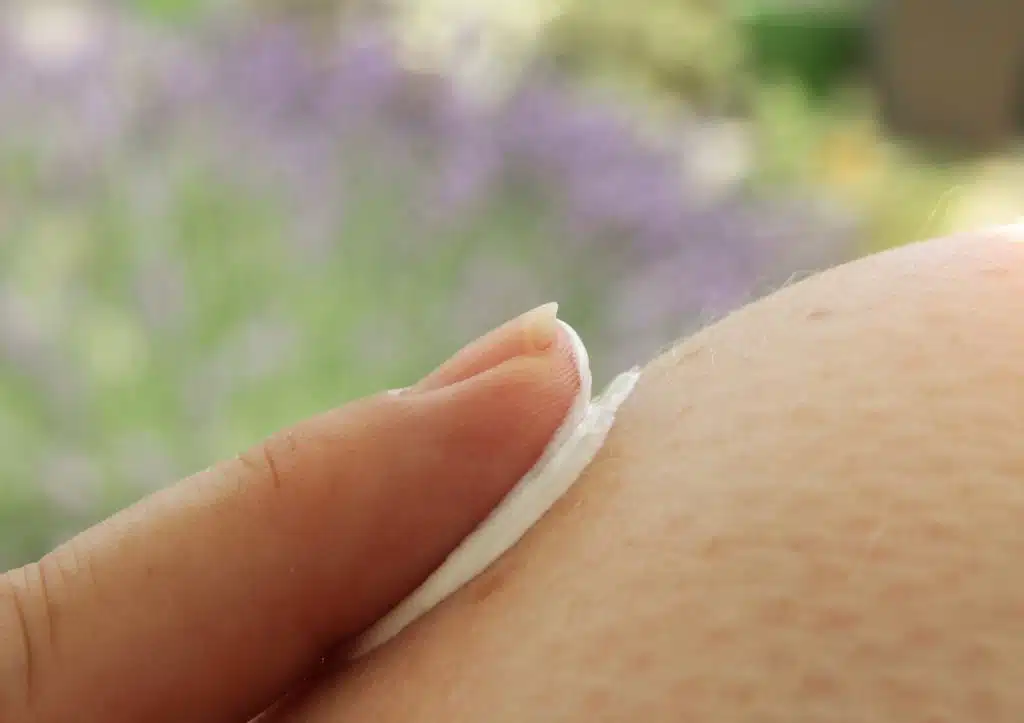
But this is actually terrible for your skin.
You see, modern skincare is largely based on treating your skin like any other surface in your life. And if you go by that logic, the modern way kinda sort makes sense, right? Your kitchen counters get dirty, so you wipe them down. If they’re really dirty, then you use an abrasive to get that extra gunk off.
 Modern skincare works along similar principles: your skin gets “dirty”, so you wash it down, and if it’s really dirty, you scrub it.
Modern skincare works along similar principles: your skin gets “dirty”, so you wash it down, and if it’s really dirty, you scrub it.
Fantastic, if your skin happens to be a non-porous, hard surface like your kitchen counter.
Not so great for actual living, breathing cells made of delicate tissue membranes.
And that’s what your skin actually is.
It’s not some sort of dead surface, it’s living tissue that plays host to thousands of species of microorganisms, almost all of which work to keep us healthy inside and out. Because the other really cool thing about your skin is that it’s porous — whatever you put on it is absorbed into your body, where it quickly makes it way to your gut and brain.
Kind of makes you rethink those chemical-based cleansers and moisturizers, huh?
What’s more, it’s really good at self-regulating, if you’re not constantly throwing it out of whack with harsh cleansers and synthetic moisturizers. (What, you thought people just walked around with crazy-greasy skin throughout history?)
We’ve forgotten these basic truths about our skin, and fallen into the habit of treating it like any other surface, and it’s destroying our skin and damaging our health.
I’m Matt, by the way. I run a skincare company called Primal Derma that’s actually a front for helping modern humans living in a society that’s scaled way beyond what we can cope with make a return to the connection among ourselves and our world by reviving the ancestral traditions that have linked us together for millennia.
(Don’t tell anyone. Actually, on second thought, tell everyone!)
And that also happens to translate into you getting access to the type of skincare our bodies evolved to need — skincare that’s really hard to find in our modern market.
Who is Matt Stillman?
 Matt’s been obsessed with how modern humans fit into an ancient world since, well, forever. That’s played out in everything from his time bringing shows highlighting the connection between food and culture to the Food Network as a programming executive to his work co-producing the Cannes-premiered, acclaimed documentary The End of Poverty? to the way he gets his groceries — always from farmers he has a personal relationship with — and now, Primal Derma; premium, hand rendered, expertly mixed traditional skincare, made on a human to human scale, delivered fresh from his home in Harlem to yours.
Matt’s been obsessed with how modern humans fit into an ancient world since, well, forever. That’s played out in everything from his time bringing shows highlighting the connection between food and culture to the Food Network as a programming executive to his work co-producing the Cannes-premiered, acclaimed documentary The End of Poverty? to the way he gets his groceries — always from farmers he has a personal relationship with — and now, Primal Derma; premium, hand rendered, expertly mixed traditional skincare, made on a human to human scale, delivered fresh from his home in Harlem to yours.

Let’s get back to that afternoon in my kitchen.
To say that I get intrigued by certain subjects would be an understatement — I have a habit of diving way deep into anything that catches my interest, and this was no exception.
After I read the article that day, I knew I wanted to try out this wonder-moisturizer for myself. The recipe called for grass fed beef fat — not something you can pick up at your local supermarket — but luckily, I knew just where to get some: my friend Keith.
Here goes your text … Select any part of your text to access the formatting toolbar.
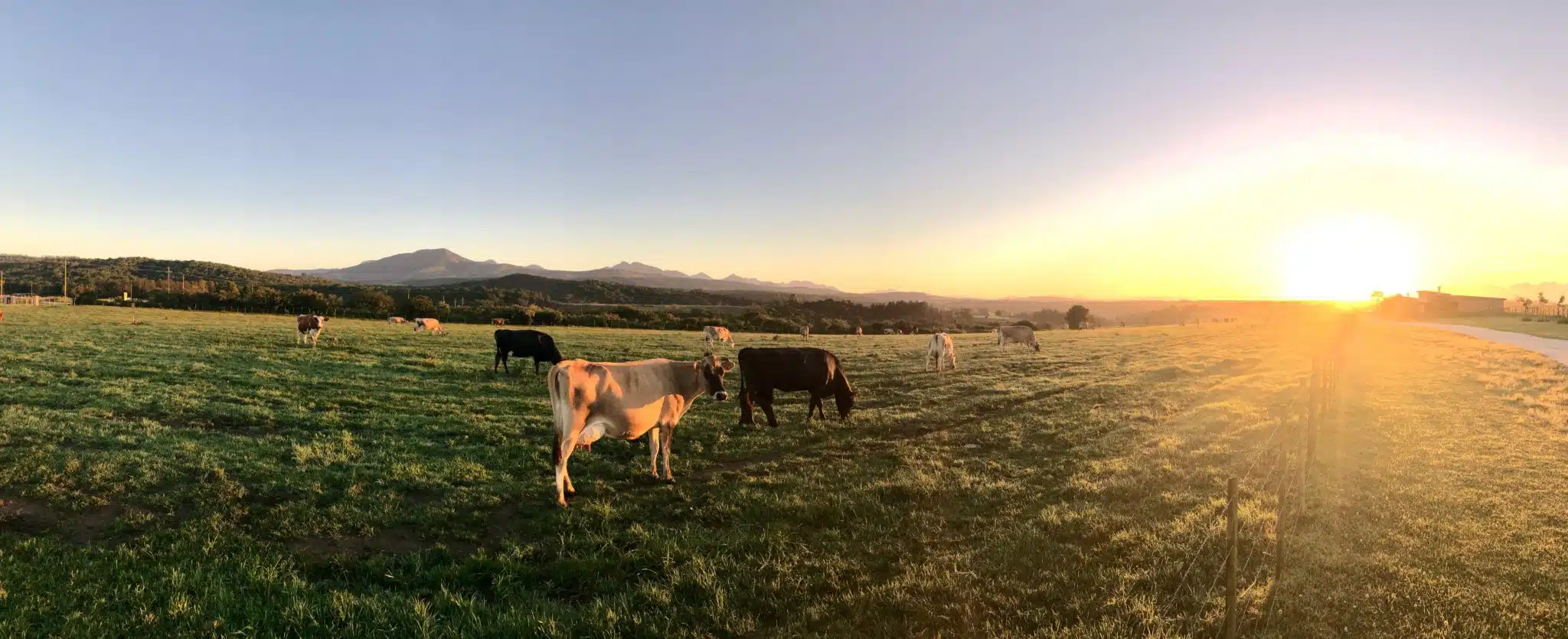
Keith runs a small farm in Salem, New York that looks just like you’d want a farm to look. Cattle graze on lush, green grass, and everything is run using the traditional wisdom farmers have used to responsibly care for their stock for thousands of years.
I met Keith a couple years back when I started buying all my groceries local. As a Paleo foodie, and the son of a macrobiotic chef, high quality, delicious, organic food is incredibly important to me. And as part of my deep commitment to connection in all its forms — with the people, environment, and history you’re surrounded by — it’s equally important that the food I eat comes from local farms and is raised in as respectful and humane a way as possible.
So that day I called Keith up and asked him if he had any beef fat I could buy.
I was in luck, he said — he happened to have some lying around. It was useless to him; nobody wanted it, so he had been planning to just throw it away, but if I wanted some, it was all mine. 10 pounds or 100 pounds, the same price.
So of course I bought 100 pounds, hauled it back to my apartment, and got to work.
A few days of chopping, rendering, and cooling later, I had my first jars of tallow moisturizer ready for use. I scooped up a little on my fingers, and rubbed it into my hands like lotion … and immediately went to go wash it off.

The first batch was kind of terrible.
The texture was oddly chunky, it felt too soft, and I just couldn’t see myself wanting to put it on my skin on a regular basis.
But I was not to be deterred. In fact, it just got me more interested, because I could see the potential for some truly amazing skincare there, and if people 17,000 years ago could figure this out, then I could too.
I was going to crack this recipe, and I had 90 pounds of beef fat left to do it with.
So I immediately started tweaking different parts of the recipe, one by one. A little more fat, a little less fat. A little longer on the boil, or a little shorter. Adding in a bit of this, a bit of that. It took a while — but I finally ended up with a recipe I loved.
It was made of just three simple ingredients, and it was damn near perfect. It was time to field test it.
So I started giving away pots to anyone who wanted any. Friends. Neighbors. Friends of friends who had tried it at someone’s house and just had to have some.

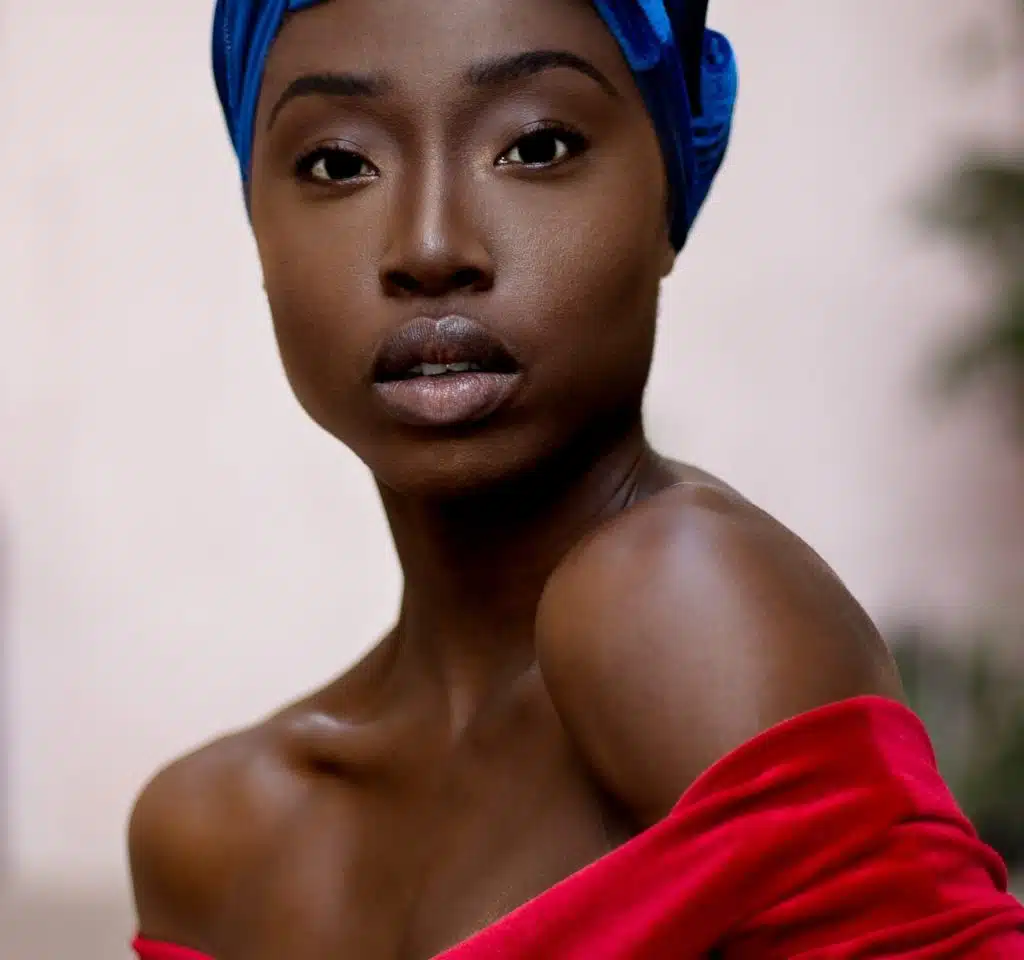
Smooth.
People loved the silky texture that held its own without being oily. It was easy to smooth over lips, skin, and hair, and it felt like one of those ultra-fancy moisturizers that only comes in tiny pots.
Moisturizing.
It was deeply moisturizing, soaking effortlessly into skin and making it soft and plump, with no greasy residue. It turns out that tallow is nearly bio-identical to our skin’s own fats. While plant oils can be great, they’re just not as close of a match, so eventually, your skin builds up kind of a tolerance to them, and they’ll stop soaking in as well. (That’s why you might find that a plant oil works great for a while, but then you need to switch to something else to get the same effect.) Tallow, on the other hand, is so close to your skin’s own fats that your skin doesn’t really recognize it as an “outsider”, so it’s just as effective the 100th time you use it as it is the 1st.
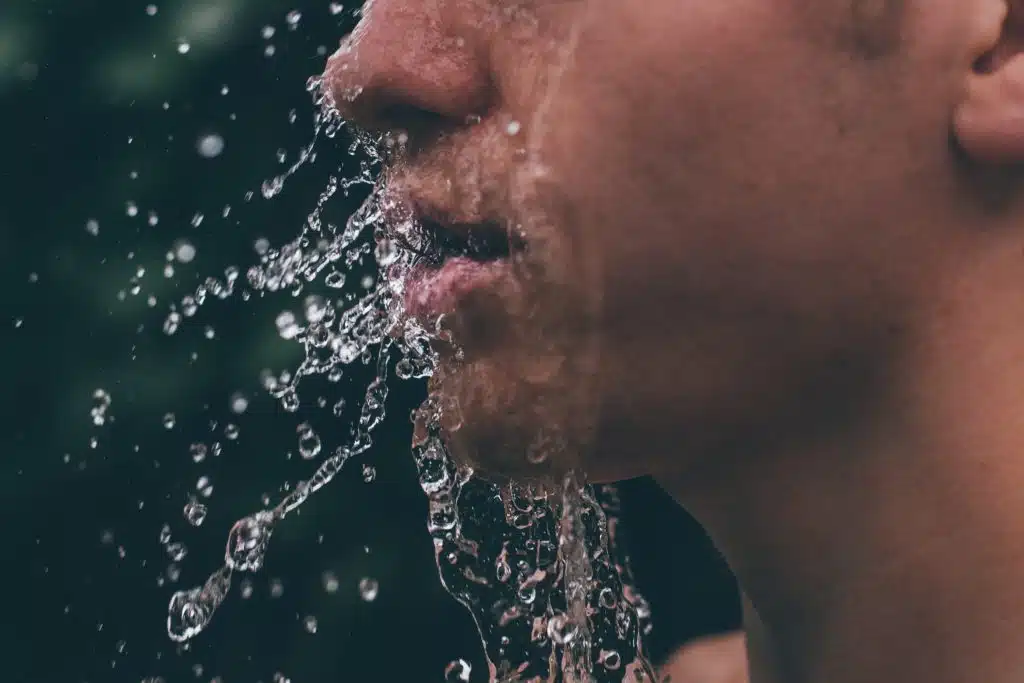

Safe.
Sensitive skin? Effortlessly eased. Torn up, angry, damaged skin? Smoothed and soothed. It even worked on the delicate skin of my friends’ babies –– and you know when it’s mom-approved, you’ve got something good.
This was clearly an amazing product. So why was I one of the only people in the world making it? Why hadn’t the skincare industry caught on?
I Started Looking Into the Skincare Industry –– And I Didn’t Like What I Saw.
Our modern skincare is built around claims like…
- Your skin will get greasy and dirty if you don’t wash it all the time, and dry and wrinkly if you don’t slather it in expensive moisturizers.
- Bacteria and germs cause blemishes, and if you want to avoid them, you need to regularly strip your skin of oil and contaminants.
- The best way to maintain your skin as you age is a complicated routine of products and tools.
The problem is…
It just isn’t true.
But a lot of people think it is because skincare companies have a vested, very large financial interest in making you think it is…
Which Is Where The Snake Oil Comes In.
I’m talking literal snake oil, not just advertising. You see, a lot of people don’t realize it, but our modern skincare industry got its start in the old timey medicine shows that used to travel the US.
These touring acts were popular in the states up throughout the early 20th century, and typically looked something like this: a wagon (with promises of good health and entertainment painted on the side) would pull up in town and set up shop for a couple of days.
And hey, it was usually free and it was the 1800s, and entertainment like this was often few and far between in these towns, so why not go?
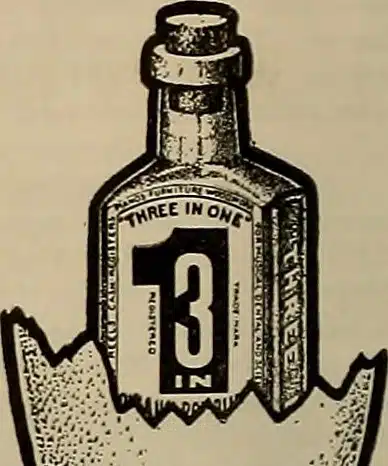

Once there, you might see a musical performance from an organ built into the wagon, magic tricks or acrobatics, a stereotyped, supposedly Native American show that played on the worst tropes of the time, or a muscle man performing great feats of strength.
In between the acts, the Doctor or Professor (who was usually neither of those things) would come out and lecture about a miracle cure that was good for what ailed you.
He might tout the benefits of electrical stimulation and sell you “conducting gel” that would attract the electrical rays that would cure your ills, or maybe try to sell you on the benefits of Dr. Kilmer’s Swamp-Root or the famous Stanley’s Snake Oil.
Brands we’re all familiar with today, including Listerine, Bayer, and Vick’s VapoRub all got their start in shows just like this, and these types of shows also pioneered the use of modern advertising, including tricks we see all the time today, like the use of pseudo-scientific terms, celebrity endorsements, and the promise of what exotic ingredients could do for you.
Medicine shows made a killing up until the late 1800s, when too many reports of fraud and some revealing investigative journalism had the tide turn against them. The Pure Food and Drug Act of 1906 brought and end to the era, but not to the advertising, which simply switched industries over into, you guessed it, cosmetics.
Our Modern Approach to Skincare Is Based on the Same Tactics
Once the patent medicine era came to an end, many companies that previously sold patent medicines simply switched their focus to selling skincare –– sometimes not even changing the product involved!
Sound familiar?
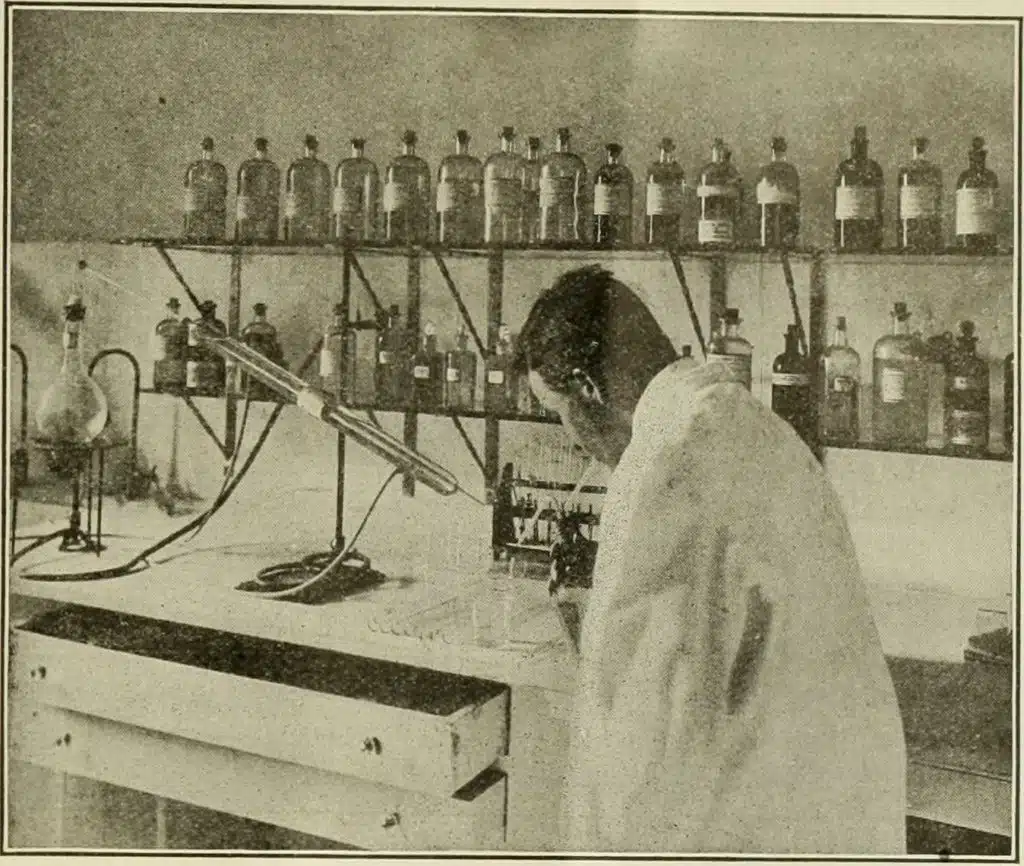
Pseudo-science
Whole ranges of products are sold based on their supposedly scientifically-proven benefits. You’ve got “cosmoceuticals” based on “gene science”, those that are “clinically proven” to “revitalize” you, and “skin analyses” that supposedly tell you the best chemicals to put on your skin to make it smoother.
Celebrity Endorsements
You could already name half a dozen skincare and cosmetics companies that have built their reputation on celebrity endorsements. And while we all know that just because a product supposedly works for this or that celebrity it doesn’t mean that it will work for anyone else, it’s still a powerful marketing tool.


Exotic Ingredients
Stroll down the personal care aisle of a grocery store or pharmacy and you’ll be inundated with skincare options that are packed with exotic ingredients just waiting to give you the skin of a magazine model. From shea butter to snail gel, orchids to eggshell membranes, there’s a product for every ingredient. And while some of those ingredients can be beneficial, it’s really difficult to find products that actually contain a meaningful amount of them. Much more often, the product just has a picture of that ingredient on it and a tiny percentage of it, or worse, some kind of chemically altered derivative of it that might as well be totally artificial.
It Gets Worse…
Sketchy advertising is already bad enough, but what’s even worse are the false premises underlying modern skincare.
The message we get from the skincare industry is that without their products, our skin will be totally out of control, being either way too oily, way too dry, or somehow both at once.
(Yeah, it doesn’t make a whole lot of sense.)
The whole idea behind the modern skincare industry is that your skin can’t self-regulate.
Read that again.
The whole idea behind the modern skincare industry is that your skin is some sort of dead surface that you have to keep clean, otherwise you’ll end up with out-of-control oiliness, over-the-top dryness, or any other problem you can think of, and the answer is constant, aggressive intervention with chemicals.
And sure, your skin’s pretty powerful. It can do a lot to heal itself. And, given time, it might be able to adjust to the current conditions in which we’re living. (After all, we are a constantly evolving species.) But we’re currently at an evolutionary disadvantage: our skin has never been exposed to this many different stressors at this volume, we simply haven’t had time to evolve mechanisms to deal with them.
The skin industry says that the answer is to pile more chemicals on top of the chemicals your skin is already struggling to deal with. Which, again, makes sense if your skin is something dead that you can sterilize, like a countertop.
But since it’s not, and since you don’t actually want your skin to be sterile, all those things they’re selling you to fix the problem just end up perpetuating it.
Your skin doesn’t need to be “fixed”. You just need to give it the tools it needs to do its job, that is, simple, effective moisturization from a natural source that your skin evolved to embrace.
Order Primal DermaJust compare that to a typical skincare routine: you wash your face, which strips the oils off of it. Your skin, which normally would maintain a pretty even balance of oil, now senses that there’s no oil there (because you just stripped it), and starts producing more, leading to greasiness that you feel you have to deal with by using a cleanser. See how it goes around?
Think about it this way: by putting salt down on roads in the winter, we can make them safer to drive, sure. The salt melts the ice. But it also melts and runs off into the soil underneath and around the road, poisoning it for decades to come. Totally unnecessary –– there are other ways we can de-ice roads that are safer and healthier for the Earth –– but very common.
The same thing goes for most moisturizing routines. If left to its own devices, your skin naturally keeps itself appropriately moist for the environment in which you’re living. (These moisturizers are called natural moisturizing factors, in case you’re curious.) And your skin is really good at adapting its moisturization levels to where you are — if you go to somewhere drier, you’ll produce more; go somewhere damper and you’ll produce less.
But this can only happen if you’re not throwing your skin off with unnatural chemical moisturizers!
If you’re regularly altering your skin’s moisture with substances that aren’t meant to be on there, it’s going to mess with your skin’s ability to maintain appropriate moisture levels if you stop using the moisturizer or dramatically change locations.
It’s kind of like it takes away your skin’s sense of “normal”. Again, your skin is powerful –– stop screwing it up with chemicals, and after a couple of weeks or so of good care, you’ll start seeing a difference.
And That’s Not Even Accounting for the Issues Caused by the Ingredients Themselves!
If you’ve spent any time at all looking into natural skincare, you probably have the sense that many of the things we put on our skin aren’t that great for it. But you might be surprised to learn just how unhealthy some of the most common skincare ingredients are.
Conventional Skincare's Worst Offenders:
Alcohols
Alcohols are naturally drying, which just makes it all the more confusing when they’re included in moisturizers. While they can make the texture of a product feel lighter, and can also remove oil from the surface of your skin for a cleaner feel, they’re terrible for your skin, drying it out and throwing your natural oil production totally out of whack.
Industrial Lubricants
I’m not the biggest fan of using a substance both in my car and on my face, but then again, I’m a self-professed weirdo. A lot of moisturizers contain ingredients that also have industrial applications, including propylene glycol, which is used in anti-freeze and has terrible effects on your skin; petro-chemical products like mineral oil or paraffin, which are awful for your skin, not to mention the environment. (Not to mention all the negative effects they can have in the rest of the body as they reach your bloodstream!)
Fragrances
Things get really shady really fast when you start looking at fragrances in moisturizers. Because they can be classified as trade secrets, skincare companies don’t have to reveal the chemicals that are used to make up the fragrance, so it could be literally anything. Among the many (terrible) options, you’ve got diethyl phthalate, camphor and ethyl acetate, dichloromethane (used in paint stripper!), which irritate your skin, mess with your upper respiratory system, and put stress on your liver, among causing other health issues.
Preservatives
Parabens, phthalates, and formaldehyde — all things you really don’t want soaking into your skin, and all incredibly common in moisturizers. While parabens will keep your lotion from growing yeast or mold and phthalates keep products soft and preserved, both may also mess up your hormones and metabolism put you at greater risk for certain cancers. And of course, formaldehyde. Need I say more?
The more you look into things, the more it becomes shockingly clear that most of the skincare out there isn’t just ineffective –– it can be incredibly dangerous!
So why is it like this? Why is this clearly unhealthy, unneeded, and unhelpful approach still ruling the skincare industry? Three reasons…
Reason #1: We want results fast.
Because while alcohols are bad for your skin, they make it feel different fast, and we want to feel different fast.
Reason #2: We want cheap products.
Because while industrial lubricants soak into your body and cause problems from head to toe, but they’re usually cheaper and easier to make than natural, healthy ones. Because you can make synthetic fragrances by the barrel-load in the time it takes to extract real fragrances from truly natural ingredients. And that, again, makes it cheaper.
Reason #3: We want products that last forever.
And because the inhuman, out-of-scale pace of our society dictates that we have to have a suite of products available at all times, for all times, which means that preservatives are an underpinning of nearly every product.
It All Comes Down to Profits Over People
And I have a problem with that. Several, in fact.
Because having researched firsthand the devastating effects that unfettered capitalism and our constant search for more, more, more have on the world, I know that the scope of this problem ranges all the way from the individual to the world as a whole.
When we buy things we don’t need (and that don’t work anyway) to solve a problem that’s been invented to sell products, we both support and are victimized by a system that’s terrible for all of us.
it’s a problem for your skin, because your skin doesn’t need a bunch of chemicals slathered on it to stay healthy. And it sure as hell doesn’t need a bunch of ingredients that could also soak into it and screw up your health.
It’s a problem for society, because the economies of scale necessitate stepping away from the ancient practices that connected us with each other and with the source of the ingredients that can keep us well.
And it’s a problem for the world, because when we’re disconnected from the people around us, we’re more likely to do terrible things to each other. When we’re disconnected from the sources of our products, we’re much less likely to care about them, which is how you end up with something as seemingly innocent as skincare coming as the result of a process where we make holes in the world and pull finite resources out of them, instead of working with the natural world to create renewable, genuinely useful products that are created with respect for both the user and the source.
We weren’t meant to live like this — and we don’t have to.
Primal Derma isn’t going to magically solve poverty, reconnect a fractured society, or even change the skincare industry overnight. But it is a tiny way that you can step back from a way of living that neither serves you nor the people around you, and make the choice to be that much more healthy in your skincare and human in your sourcing of it.
It Starts By Understanding What Your Skin Actually Needs
Because if you’re not sure what you actually need, then how can you know where to draw the line with your skincare, right?
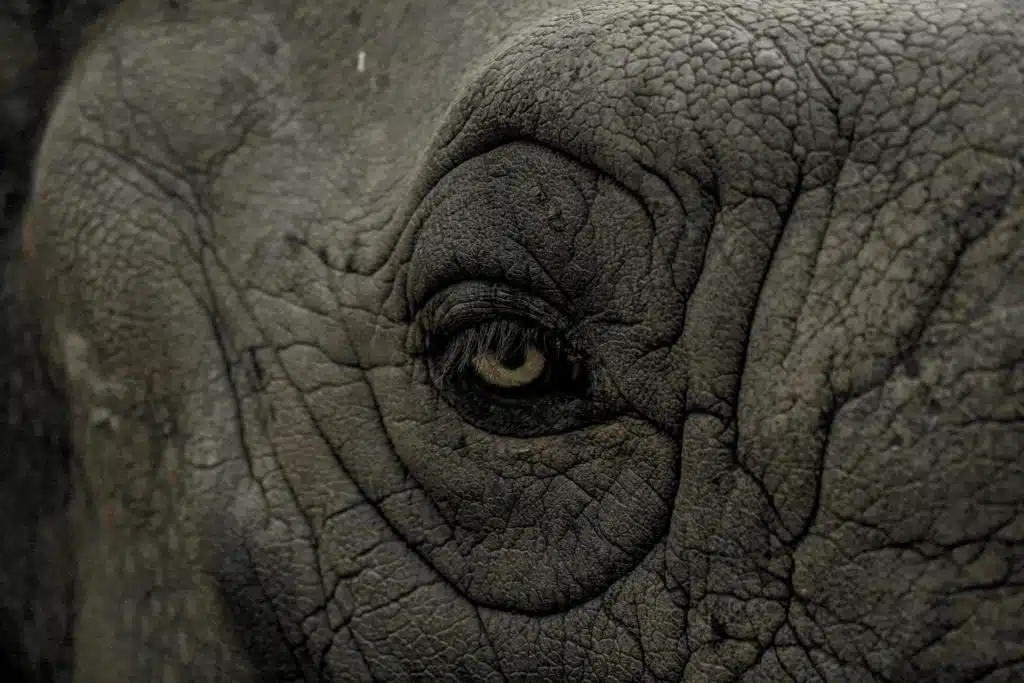
So a quick biology lesson: your skin is made up of three main layers, the epidermis, the dermis, and the hypodermis. We’re going to focus mostly on the epidermis and dermis, because that’s where most of the things you care about with skincare happen.
The epidermis and dermis are made up of cells that are designed contain moisture and to be both plump and flexible. Saturated fats, collagen, elastin, and a series of vitamins all work together to keep your skin healthy and firm. (Translation: young looking, moisturized, and wrinkle-free.)

Your age, diet, and how much water you drink have a lot to do with how well your skin retains its structure, but it can also be affected by things like exposure to free radicals from UV radiation and pollutants, as well as chemicals like those found in many skincare products. Even something as seemingly innocuous as regular exposure to hot water (e.g. those long, hot showers we all love) can start to break down these critical structures in your skin, leaving it dry and unhealthy.

And since our modern living conditions are an historical anomaly, we’re more exposed to the things that can damage our skin than ever. The real solution is to change our living conditions. The real solutions would be living close to the land, in relation to our food sources (both plant and animal), and in a less toxic environment.
But, until those things happen, we need to to replenish the moisture in your skin. Remember, moisture = firmness = healthy, young looking skin.

Let’s recap: epidermis and dermis are made up of cells that are designed contain moisture.
But moisture doesn’t just mean ‘water’. In fact, too much time in water could make your skin dry.
Part of the issue is dehydration but an even bigger challenge is delipidation – not enough healthy fats.
Fats = moisturization.

Can plant oils do the same trick? They can, but there are some issues (more on this in a moment).
While you can do a lot to help with this by avoiding the things that dry your skin out such as overwashing your skin, products that contain drying alcohols and antibiotics, and fragranced lotions; drinking lots of good quality water; and eating a healthy, nutrient-dense diet, your skin can also benefit from some extra moisturization. But, like we talked about before, it’s super important to make sure that it’s the right kind of moisturization — otherwise you’re going to create more problems than you solve.
1. So-called “natural” moisturizers.
There’s no shortage of moisturizers on the market, including a lot that claim to be “natural”. Just look at things like Aveeno Active Naturals line, Nivea’s Pure and Natural products, or the ubiquitious St Ives apricot exfoliating face wash. They all look pretty and fresh. They say they’re “natural”, and they do include some ingredients you might find at a farmer’s market. But the problem is, a lot of them have been messed with so much that the benefits of the natural ingredients they contain have been either totally destroyed by the alterations they’ve been put through, or are outweighed by the other, damaging ingredients they contain. At best, you can hope to come out even with these types of moisturizers: they might not damage your skin too much, but they’re definitely not your best option.
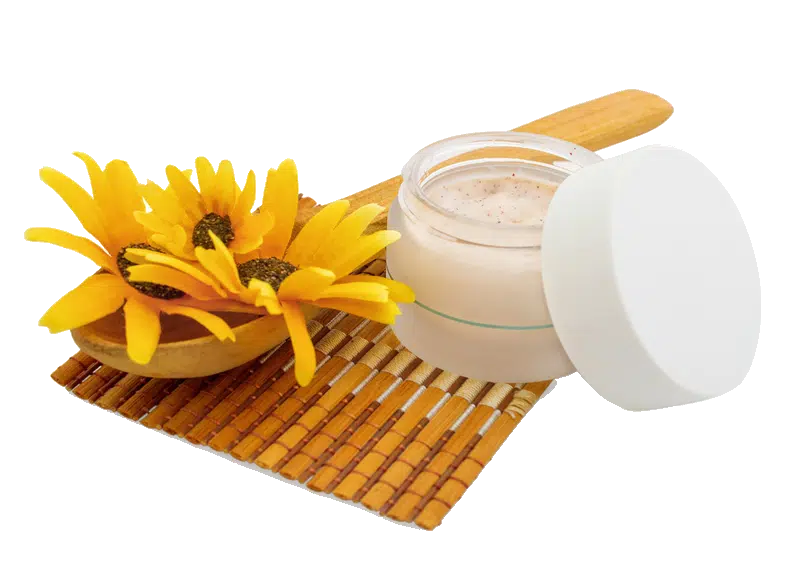
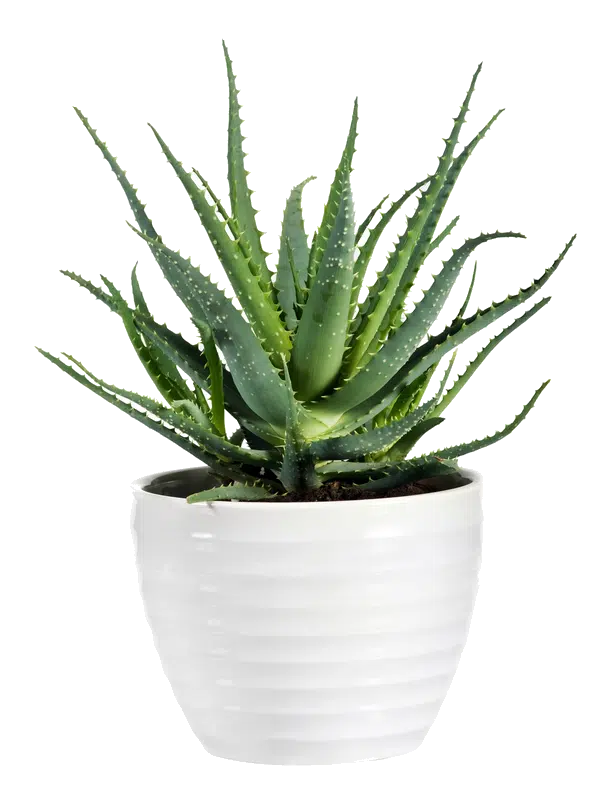
Additionally, it can be hard to know how the source ingredients used to make the oils are produced, and whether that’s going to have an impact on their ultimate healthiness and effectiveness. There’s no point in getting a great, cold-pressed jojoba oil if the jojoba seeds the oil is made from are coated in pesticides, for instance.
Finally, a lot of plant-based oils are mixed into mystery compounds, so you can’t really know what you’re putting on your skin. An oil that’s marketed as argan oil, for example, might contain a little bit of argan oil and a whole lot of sunflower oil, or a pricey prickly pear oil might actually be made up mostly of soybean oil. There can be a lot of ‘filler’ in these oils.
And even if you do all the research and find a plant oil that’s pure, manufactured from good, high quality source materials in a way that maintains the integrity of the oil, you still have the issue of biology. We’re mammals, not plants, and the moisturizing components they contain aren’t a perfect molecular fit to our bodies (but can be pretty good), so they don’t have quite the effect you hope they will. So while plant oils will work just fine for your skin, and may keep you nice and moisturized for a while, they’re just not as good of a fit as tallow. (Not to mention that unless you’re growing and processing your plant oils yourself, they’re almost always part of the industrialized food processing system, and so further away from nature than you might think.)
Long story short, plant oils are OK … if you’re up for getting up close and personal with the manufacturers and have the time to research the origins of your oil, and you don’t mind switching to a new one every now and again. But you can do better.
3. A premium animal fat moisturizer.
The grass-fed, organic goodness that is high quality beef tallow that makes up Primal Derma is by far your best option for natural, effective, safe moisturization.
Why?
Because Organic, Grass-Fed Beef Tallow Is One of the Most Nutrient-Dense, Effective, and Versatile Skincare Options On the Planet.
And our ancestors knew it.
OK, they didn’t have the lab results that we do, or the time or energy to put a whole lot of focus on skincare, because survival took precedence.
But what they did have was ungulates. Cows, sheep, camels, bison — you know, mammals with hooves. And as splintered bones at ancient sites like the caves at Lascaux (among many others) show, people have been butchering these animals, breaking them down, and cracking open their bones to get at the marrow for at least 20,000 years.
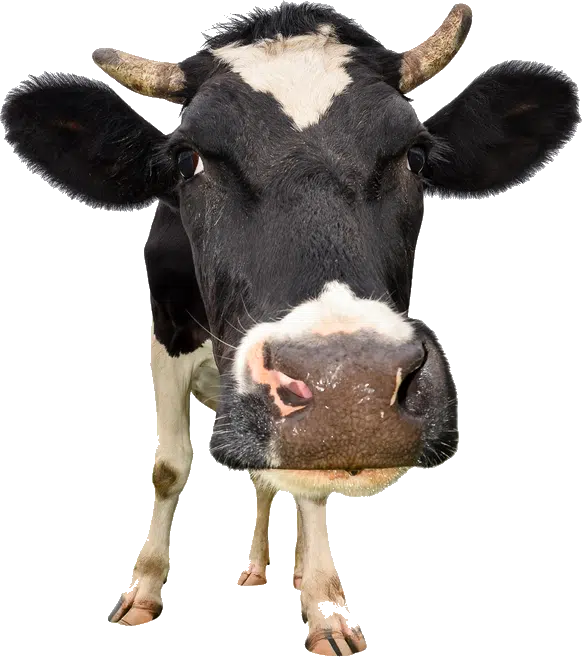
Just imagine that process for a second.
You’ve been lucky and skilled enough to either raise this big animal to adulthood, or you’ve been able to hunt one down. You can rest easy knowing that you’re going to be fed for a while. You’ll have the leather you need to make clothing, shelter, and containers. You’ll have the rich nutrition of the marrow inside the bones and the deeply satisfying fat to eat, fuel your lamps, and soothe your skin.
You’re going to make sure you use every single part of that animal — not only because it’s useful, but because there’s a very good chance that your religion (which you could really consider synonymous with “way of life”, unlike the relatively minor role religion plays in many of our lives today) has embedded the idea of connection in you. The animal is connected to the earth. You’re connected to the animal. The products you can create from that animal could connect you to others, if you share them or sell them.
And that means that as you’re honoring this animal, taking it all apart, you’re necessarily going to get very up close and personal with the carcass. There’s just no way to take apart a big animal like that, particularly using ancient tools, and not become coated in the fat stored under its skin.
Our ancestors had the connection and common sense to realize that this is great!
Tallow is protective, soothing, and restorative for your skin. And that’s why animal fats have played a key role in salves, ointments, poultices, and eventually, skincare for peoples all around the world, all throughout history, including Babylonians, Egyptians, Australian Aborigines, Inuit, the Himba and Hamer tribes, and Native Americans.
And Now We Have the Science to Back Those Traditions Up
Modern research shows that rendered, grass-fed beef tallow is one of the very best things you could possibly be putting on your skin.
It’s nearly bio-identical to human cells –– meaning that it’s incredibly similar to your cells, right down to a molecular level –– and it’s uniquely compatible with the biology of your skin, containing the saturated fats it needs to maintain its structure over time. The similarity to your skin cells also means that your body accepts tallow in a way it just can’t with other types of moisturizers, which means that you get a light, deeply enriching formula that soaks in quickly, unlike many plant-based oils, which sit on top of the skin for ages, almost like overwatering dry soil –– the water just runs off or sits there, never penetrating into the earth like it should.
What’s more, it’s incredibly nutrient-rich, full of substances that promote skin health and are only all found together in animal products, including:
I am a heading
Here goes your text … Select any part of your text to access the formatting toolbar.
